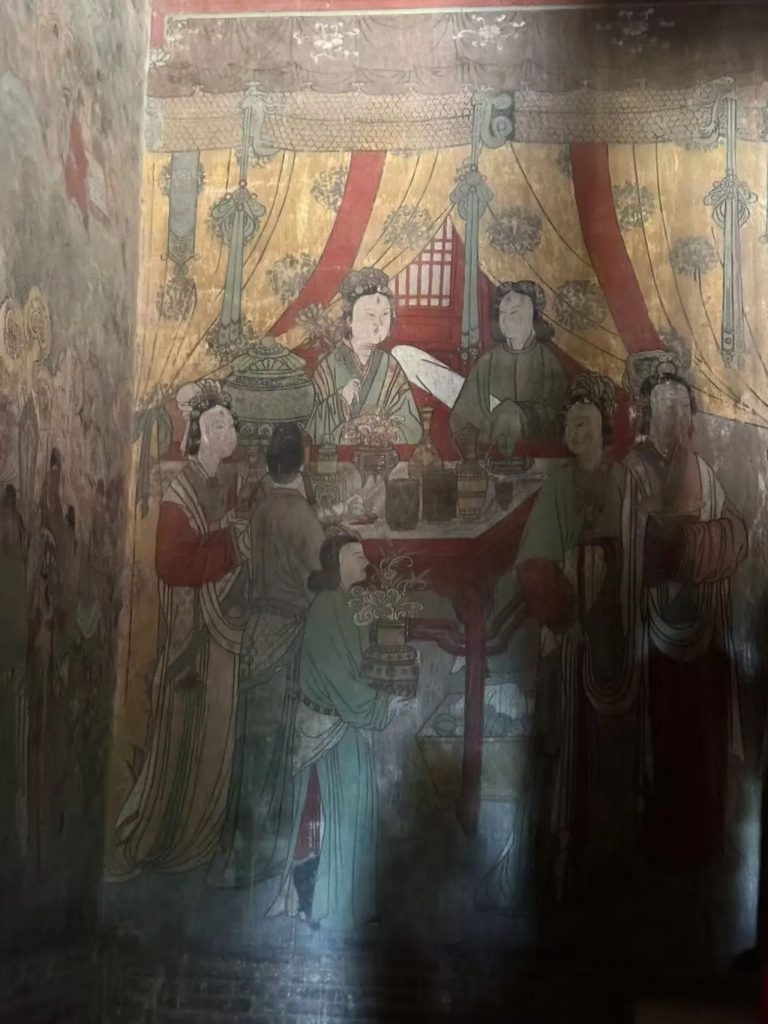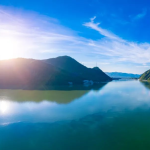For the sake of our friend’s Xiaoxitian, we added Linfen separately on this trip. In theory, it should be a line in the southeast of Shanxi. Next time, Jinxi will be separated, but in order for our friends who are separated from the army to join us, we rushed to Linfen overnight. Let me share some photos taken by my friend with everyone.


If you are making a strategy, please do not include Linfen in the southeast of Shanxi, otherwise the entire journey will be very tiring. Jincheng and Changzhi have countless national security units, and the two cities can be transferred for at least seven days. In western Shanxi, there is Yuncheng, the first city of Shanxi Wenbao, and in central Shanxi, there is Jiexiu. Let’s take a photo together at Hukou Waterfall, Mengshan Giant Buddha
I can’t even play in Shanxi eight times. That day, I joked with my friends and checked in two times a day. I can play on the ground in Shanxi until I’m 80 years old, how could I watch all of them. At night in Linfen, we had a meal at a Pingyang food stall. It was really cheap, delicious, and delicious in Shanxi. When we arrived in Shanxi, the money was really generous. We were seven people and had a big table of food and rice, but we only spent 332 yuan. When Le Ye checked out the bill, he kept looking at it and thought he had bought the wrong order. Why didn’t he order all the dishes I ordered? He only ordered a few dishes for me with this money. Shandong really makes money and Shanxi spends it. I feel like I am as rich as a country. Too affordable, too affordable. Jinbei is slightly more expensive, but it’s not much more expensive.


I forgot to mention in the last article that there is the largest Chenghuang Temple in Luzhou, also known as Changzhi. When you go to Chenghuang Temple, you must not forget to clock in. We really don’t have time, so we need to make a choice. The Luzhou banquet is very upscale and delicious. Everyone who goes to Changzhi must try it. The eldest son’s pork head is yyds. It’s really fragrant, and the lamb chop pot is also super delicious.

It’s really delicious and upscale. It is truly a reception room for Changzhi people.
I lived in Yaduo for the first time in my life history in Linfen, and I felt that the experience was fantastic. When I arrived in Jincheng, I developed a rash, which was also a way to convince myself.
Speaking of accommodation and meals for this trip, my two favorite places are the cultural and tourism customer service center in Changzhi. I thought I had booked the wrong place when I saw the name. What kind of hotel is this? As soon as I arrived, I saw that it was really impressive, just like the Great Hall. It was right next to Zhangze Lake Wetland Park, and when I woke up for breakfast, I could see the scenery of Zhangze Lake, which was very beautiful. The hotel rooms were particularly large, maybe over 800 during the National Day holiday.
I stayed overnight in Linfen and persuaded my friend who was planning to go to the big locust tree to search for roots. I searched for lightning protection stickers on Xiaohongshu and felt that the attraction of the Great Huai Tree has more gimmicks than content. We went straight to Guangsheng Temple with a group of 11 people, and also left a photo of the few 11 people involved in this behavior. Guangsheng Temple is a very famous scenic spot in Linfen, and it is also one of the few tourist attractions that attracts many people. The shuttle bus is stuck in traffic, there is a queue for going up and down the mountain, and there is a queue for explanations. It is the first time to feel the excitement of National Day and the first time to rectify the chaos in the scenic area.
Guangsheng Temple is located at the foot of Huoshan Mountain, 17 kilometers northeast of Hongdong County, Linfen City. The temple was first built in the first year of Jianhe reign of Emperor Huan of the Eastern Han Dynasty (147 AD) and was originally named Julushe Temple, also known as Yuwang Pagoda Temple. In the Tang Dynasty, it was renamed Guangsheng Temple. In the fourth year of the Dali reign of the Tang Dynasty (769 AD), the Imperial Secretariat ordered King Guo Ziyi of Fenyang to compile a document and request its reconstruction. During the Song and Jin dynasties, Guangsheng Temple was burned down by war and subsequently rebuilt. In the seventh year of the Dade reign of Emperor Chengzong of the Yuan Dynasty (1303), a major earthquake occurred in the area of Pingyang (now Linfen), and all temple buildings were destroyed by the earthquake. In the autumn of the ninth year of Dade (1305), it was rebuilt again. Since then, in the 34th year of Jiajing in the Ming Dynasty (1555) and the 34th year of Kangxi in the Qing Dynasty (1695), earthquakes occurred again in Pingyang, but the temples were not seriously damaged in these two earthquakes. Except for the Flying Rainbow Tower in Shangsi and the the Shakya ManiHall rebuilt in the Ming Dynasty, the rest were buildings of the Yuan Dynasty. The main buildings include the Upper Temple, Lower Temple, and Water Temple. In addition to architecture, cultural relics such as murals, wood carvings, and clay sculptures are also preserved. The architectural complex of Guangsheng Temple has a rigorous layout and unique design, renowned worldwide for its long history and grand scale. It is also famous for its dazzling Feihong Pagoda, unparalleled “Zhao City Golden Collection”, and artistic wonders such as Yuan Dynasty drama murals and other precious cultural heritage. The most suitable tourist route for Guangsheng Temple is to first go to the lower temple, then climb the mountain to the upper temple, and take a shuttle bus down the mountain. Although the National Day route is also smooth and fast. There is no queue for parking at the entrance of Xiasi, and there are more highlights to see at Xiasi. If it weren’t for the Feihong Glass Tower on top, I really wouldn’t want to go up. It’s also a pity to come to Guangsheng Temple. It’s a pity to find that sometimes life is really a dilemma. If you don’t sell murals, you can’t afford to repair the whole hall. If you sell murals, you can only see them in American museums. These national treasures of wandering in foreign lands have finally become a pity for all countrymen.
At that time, it was recorded as follows: “The Buddhist temple buildings at the foot of the mountain have been collapsing for a long time, and those who travel far and wide cannot help but feel heartbroken. The people of the town often want to repair them, but they stop because they cannot raise a large sum of money. Last year, a distant guest came and said that the Buddhist temple walls were painted, and those who were knowledgeable in ancient times were elegant and could be worth more than a thousand gold. Monk Zhenda invited the gentry to estimate the price for sale, but the consensus was that there was no money to repair the temple. After many years of regret, they refused to do so, and the wall collapsed and the statue would be destroyed. Due to repeated discussions with customers, they sold silver for 1600 yuan, which was not enough to raise funds for subsidies

For Guangsheng Temple, the Feihong Glass Pagoda is well-known to the world, but the “Zhaocheng Golden Collection” is unknown. In 1933, the discovery of the “Zhao Cheng Jin Cang” in Shanxi Province was a major event in the history of modern Buddhist literature, causing a great sensation in the cultural community at that time. This complete Buddhist book is not only a Buddhist text, but also an ancient book that covers philosophy, history, language, literature, and other fields. It is rich in content, exquisitely carved, and has high value in philology and version studies. It is praised by the cultural community as a “rare book in the world”. The entire set of sutras has strong fonts, neat carvings, excellent paper quality, clear printing, and fully preserves the craftsmanship and style of the Song Dynasty’s “Kaibao Treasure”. Some Liao Tibetan reprints and important writings have been added, making it the only one in the world and a rare treasure. The “Zhaocheng Golden Collection”, “Yongle Encyclopedia”, “Complete Library of Four Treasures”, and “Dunhuang Manuscripts” are collectively known as the four treasures of the National Library. Speaking of Xiasi Temple, although some of Guangsheng Temple’s exquisite murals have been sold, what remains is still very, very wonderful and beautiful. The Mingying King Hall in the Water God Temple also has 13 sets of Yuan Dynasty murals with different themes. Although it depicts the life in the heavenly realm, it is a complete portrayal of human life, which is extremely wonderful. The key hall is pitch black and impenetrable, yet its colors remain vibrant, truly beautiful.




